Proper care of rabbits at home
The health of rabbits directly depends on the conditions of their keeping - it is very important to carry out proper care of rabbits. A full-fledged organization of the eared breeding process is a guarantee of a good offspring, the absence of diseases.

Proper care of rabbits
There are several ways to keep rabbits at home. It all depends on the goal. Keeping rabbits in order to obtain high-quality dietary meat and skins is one thing, but if you have a small rabbit in a house for children to play and play, it is another.
Regardless of the purpose of keeping these animals, it is important to remember that they need high quality care. These creatures are very gentle - a sloppy and forgetful owner will easily destroy his pets.
Breed selection
The owners of the eared ones must decide on the task they set for themselves: either it is breeding rabbits for meat, or keeping as a pet for the family. You also need to choose a breed. The White Giant and Soviet Chinchilla breeds give a lot of good meat, excellent fur skins. Breeding these types of pets is profitable. It is possible to organize an entire farm and it is not so difficult to do it, the main thing is to take a responsible approach to this issue. Decorative breeds include the dwarf fox, a breed of squirrel. Their fur is very fluffy.

Breed selection
Depending on the breed and the purpose of the content, you need to decide where the pussies will live. Regardless of the place of detention, rabbits must have an individual place of residence: at least a small space where they can rest from annoying children or relatives. In his house, the rabbit feels free and safe. The psychological state of rabbits is an important aspect.
Content methods
All methods of keeping domestic rabbits have pros and cons. Based on this analysis, you can independently choose the method that suits your pets best. The most popular content is in the sheds. If you have a drawing, you can make them yourself, and it is not as expensive as a separate room. Pets feel normal in sheds.
Cell
This is the classic way. This is how rabbits are kept at home in our time, so they were kept in many centuries ago. It is best for novice rabbit breeders to use this method.
Cellular content is simple, it is easy to arrange the cell in an apartment or a private house. The animal can be released for a walk around the house. When keeping several individuals, this method will not work. When breeding and keeping more than 5-10 pets, you need to choose a different way of raising animals.
Cell types
There are 2 types of cells:
- stationary
- portable
Stationary cells are always in one place. They cannot be transferred, depending on the change in the weather, the change of the seasons. As a rule, the cages are installed in a barn or in regions with a warm climate outside, making a canopy from the rain.
Portable cages are versatile. In the summer they stand outside, in the winter they move to a warm room. Portable cages are more functional and easier to use, although each farmer decides at his own discretion which cage to choose.
For a rabbit with a litter, you need wider, more spacious cages, and for males and older rabbits, smaller cages are needed. They are purchased in specialized stores or built on their own, especially since there are a large number of training videos on this topic. Homemade and store cages are made from durable plastic or from wooden slats with a metal mesh. The size of the cages depends on the breed. The larger the adult male, the larger the dwelling should be. The best option for representatives of not the largest breed is 1 m in length, and height and depth of 50 cm.
Positive aspects of keeping in cages
- An individual approach to each individual. Caring for decorative rabbits at home should be of high quality, otherwise the individuals will die. If the rabbit is in a cage with cubs, fenced off from other mothers, it is possible to track how much food she ate, what her stool is, how babies develop from this particular female. The same applies to males and young animals. It is impossible to carry out such control in a common enclosure.
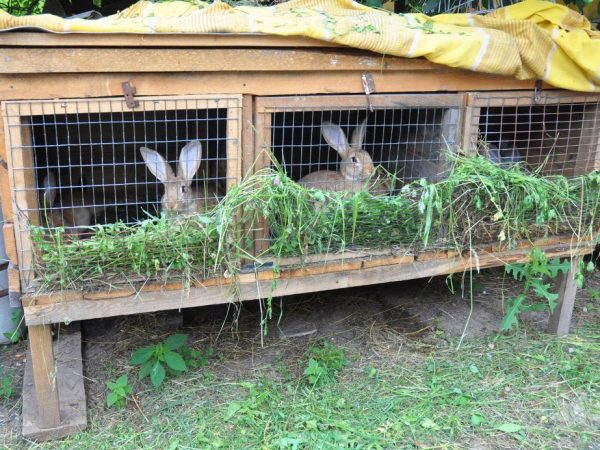
Keeping rabbits in cages
- Optimization of feed consumption. The amount of food is reduced, and caring for any rabbit at home is simplified. So it is possible to see whether an individual has food in the feeder or not. They fill up the food at the right time - the rabbit is always full. When eared animals live in large quantities in the same room, individuals are often more shy and malnourished, as a result, the owner tries to pour more food so that all the animals are fed. Hence the increased consumption of pet food.
- The risk of mass infection of diseases is reduced. Everything here is like people. In case of a flu epidemic, schools and kindergartens are closed so that the disease does not spread, but here all the rabbits sit in their own separate houses in advance, so the likelihood of infection is reduced.
Cons of cellular content
- Large costs for equipping rabbits' residences. Building materials are expensive. With a large farm, you also need a lot of cells. Accordingly, to equip a rabbit farm, you need to spend an impressive amount. To cut costs, it is possible to build cells yourself. It will be cheaper than buying equipment (cages) in stores.
- Increase the work of servicing rabbits. To remove an aviary or 50 cells, which is easier? The answer is obvious. It also takes more time and effort to distribute feed individually.
A domestic decorative rabbit should also have a cage. Not even a cage, but a house. The choice of home for such pets is extensive at pet stores. The cage or house should be 5-8 times the size of the rabbit. The pet must take a daily walk without fail. Better if there is a garden near the house. Active games, running are the key to the health of your pet.
Free content
Free content on farms is used much more often than cell content. This method allows rabbits to live in almost natural conditions. In free housing, animals develop and reproduce better.
Free maintenance involves living rabbits outdoors in any weather, winter and summer. During the period of extreme cold weather, it is necessary to insulate the rooms for rest and heating of pets. Free content is more suitable for small farms.

Free keeping rabbits
On an industrial scale, keeping thousands of rabbit heads freely is very problematic: large areas are needed. Free keeping is practiced by small farmers who organize rabbit farms in the courtyard of a village house.
With free content, it is not always possible to keep an eye on the animals. There is also a risk of accidental family ties between rabbits.
Free keeping pets will not work if the purpose of growing is to obtain valuable fur. Under these conditions, rabbit fur can get dirty and damaged.
Content in the pit
This is the favorite type of free content for experienced farmers. Pit maintenance at home for beginners is a simple and low-cost way. It is enough to dig a hole for a small number of rabbit heads, and they will do the rest themselves.
The rabbits will dig a den for the winter season, make separate rooms for the encirclement. The owner will only have to prepare an awning from rain, snow and sun, put feeders, water tanks. Can all rabbits be kept in the same pit? It is possible, but the pit should be deep and wide. For several individuals, the size of the pit is a couple of meters.
The pit can be made square, rectangular. This factor does not matter. The pit maintains the temperature necessary for the life of rabbits all year round. When choosing a place for digging a hole, it is necessary to take into account that groundwater can flood it. It is advisable to choose a higher location. You should not place a pit near sewer pipes, drainage systems: the rabbits will complete their dwelling on their own and the pipes will interfere with them. Keeping in the pit is only suitable for meat breeds of rabbits.
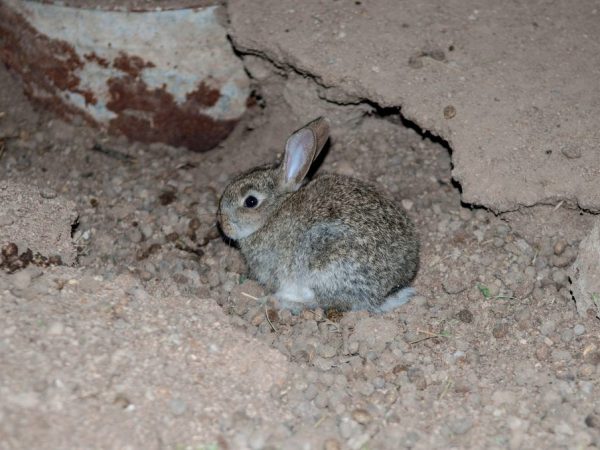
Keeping rabbits in the pit
If you are planning to get beautiful fur, it is better to choose another option. When kept in a pit, animal hair will be in mats, the skin will be spoiled when fighting for a female or territory. In the pits, such breeds of rabbits as the Butterfly, the Soviet Chinchilla, etc. give a good income. The pit keeping keeps an independent way of life for the pets. From the owner, they expect only food, drink, cleaning.
The owner will not be able to control the eared ones.
Grazing
From a material point of view, this is beneficial if you take into account all the features and approach such content correctly. On grazing, you can raise both flocks of young animals and adults. The animals also spend less energy. On grazing, rabbits have a stronger and more stable immunity to common diseases. Rabbits live in a separate mini-territory with natural food and there are practically no clashes between them.
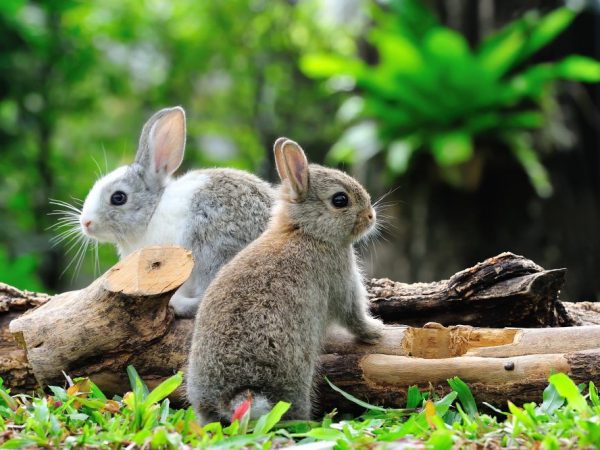
Grazing
In the summer, while the green grass grows, the farmer will only have to supply them with drink. Drinkers are installed within the pasture. It is imperative to install barriers, make a shed, equip places for rabbits and young animals. A canopy and fence will protect them from attacks by large birds and wild animals. Not far from the grazing area, it is advisable to have a protector in the form of a dog.
Positive aspects of free content
Free-keeping rabbits:
- spend a lot of time outdoors;
- move a lot;
- eat natural food;
- get sick less;
- multiply faster;
- gain weight well;
- have good meat;
- become more resilient;
- less aggressive.
Another plus is that the costs and efforts for feeding and cleaning are reduced.
Cons of free content
Among the negative sides are:
- a large percentage of mortality due to infection with diseases;
- inability to fully control the entire herd;
- the degeneration of rabbits after a few years of this type of maintenance, a decrease in size from generation to generation.
Content in aviaries
It is better to keep rabbits of meat breeds in open-air cages, as the long-term experience of rabbit breeders shows. But this kind of content is only suitable for seasonal work. For example, if it is decided in the summer in the village or in the country to breed rabbits for meat, this option is ideal. It is necessary to protect a small area for animals at the rate of 5 sq. m for a rabbit with small and newborn rabbits, for the rest - 1 sq. m for 1 head. In the aviary, rabbits feel calm and free. The main thing is that it is not cramped.The tightness contributes to fights for the territory, the spread of diseases of the livestock.
What an aviary should look like
It is imperative to cover the enclosure with a canopy or awning: this will protect the animals from heat and rain. It is especially important to make a canopy for a rabbit with babies. You can also install a large cage and several small ones so that the rabbits can equip their own space. A favorite pastime for rabbits is digging holes of various depths and sizes. It is necessary to carefully strengthen the walls of the enclosure.
It is necessary to dig a fence to a depth of 1.5 m, not less than 0.8 m, otherwise the rabbits will quickly get out of the artificial house and breed in the wild. Feeders and drinkers should be placed along the fence. They should be long, not very deep grooves. You also need to hang a protective canopy for the feeders. Street birds will easily fly to pet's dinners, increasing the consumption of purchased feed. Carefully monitor the cleanliness of drinking bowls and feeders.
Pros of keeping in an aviary
- The versatility of the structure. In aviaries, you can keep a bird, other animals, but not at the same time. Chickens suffer from various diseases that are fatal to rabbits. Feathered birds often peck and injure small rabbits. Together with downy, indoor rabbits may not converge, therefore, so that the breeds bred to obtain the skin do not get hurt and do not spoil their fur, it is better to keep them separately. If you keep a tribe of young animals from birth in special rooms, then you need to insulate such houses in winter. It is impossible for offspring or young animals to develop frostbite at birth.
- There are portable aviaries on sale. They are perfect for keeping a pet of decorative breeds. This dwelling is much more spacious than a cage or a house, although in a city apartment the aviary occupies a large area, which not every rabbit owner can afford. The whole herd must be planted in the aviary at once. These should be the same size and age of the individual. If, after even a short time, a newcomer, especially a young rabbit, is placed with them, he risks getting into a fight. Rabbits do not tolerate strangers, they never accept newcomers into the family.
Taking good care of your pets at home
Rabbits are tricky animals to grow and care for. They are very gentle, demanding conditions of detention. This applies to both decorative and meat breeds. They feel bad in the heat, in the cold. They are very afraid of drafts, as they easily catch colds, often suffer from pneumonia, acute respiratory infections. They have a negative attitude towards dirty feeders, they can simply refuse to eat for a long time.
Poor quality food confuses them too. Rabbits have one peculiarity: their stomachs and intestines are very weak. The nutrition of these pets must be monitored especially scrupulously. Pets cannot tolerate dirt in cages and aviaries. Cells that have not been cleaned for a long time are a source of disease, and the immunity of rabbits is not very strong. It is better to keep track of their comfortable content than to cure for various diseases.
List of necessary measures for carrying out in the place of keeping rabbits:
- Feeding. The feed must be sized according to the weight. Meals should be varied. Individuals should not be left without hay. Animals must have constant access to clean water. Normal functioning of the gastrointestinal tract is impossible in rabbits without drinking.
- Daily cell cleaning. It is necessary to clean thoroughly, removing absolutely all dirt, feces, food debris from the floor and walls.
- Treatment, vaccination. Weak immunity is best maintained with timely vaccinations. A sick rabbit must be isolated and treated separately to avoid an epidemic. Rabbits suffer from quite human diseases, but they do not respond well to treatment.
- Carry out cleaning of nails, wool, mouth.
Separately, you need to monitor pregnant rabbits, pay more attention to them. Females who have given birth, as well as those in position, need to be provided with more vitamins.The lack of water in the drinking bowl after giving birth can lead to the death of the giving birth female.
During lactation, rabbits drink 100-200% more water than before. It is necessary to protect the newborn rabbits with their mother from the rest of the herd for a month and a half.
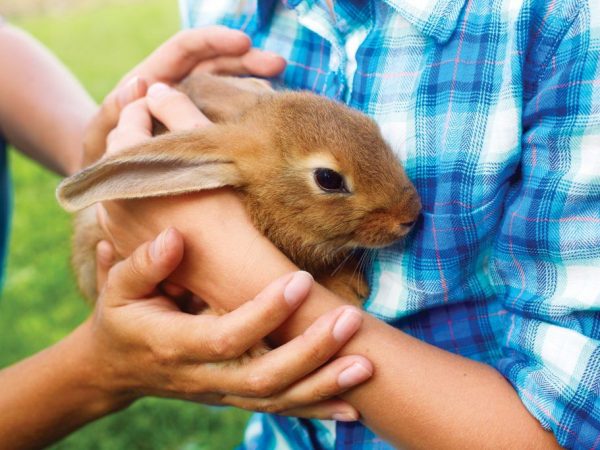
Rabbit care rules
Babies feed exclusively on mother's milk, so they should be in the same room with her. Other bunnies can hammer, injure babies. When the rabbits reach the age of 2 months, they are transferred to a common aviary or cage. Slowly they feed them with dishes from the general menu, taking them away from maternal care. It is better for the mother rabbit to live separately from the rabbits for a while, so that they can easily wean themselves from her milk.
Conditions for keeping rabbits at home
The most important condition is safety. Aviaries, cages in the pen are checked for sharp corners and edges. Rabbits are active animals, they are able not to notice a protruding sharp nail, cut themselves, and their skin is quite thin.
It is obligatory to equip the place of keeping with drinkers and feeders. We must not forget to create a separate closed room for rabbits and their newborn babies. We need to protect the houses of the rabbits from the sun. By themselves, the sun's rays are not harmful to them, but bright light and heat are very disturbing. Do not close the space completely. You need to leave the windows, because the room for the rabbits should be bright, or install lamps.
Incandescent bulbs will not work: they give a lot of heat, rabbits will be hot. You need to choose fluorescent or LED light bulbs. They should be left on for 9-17 hours a day. The ambient temperature should not exceed 20 ° C. A comfortable temperature for rabbits is from 10 to 20 ° C. These animals do not tolerate frost, they quickly freeze and die. Rooms for rabbits should be well ventilated, while it is advisable to avoid drafts and dampness. Care for the mini-offspring of a rabbit should be regular. It is advisable to lay the straw on the bottom of the cages: this will help keep the house from heating or cooling.
A shed for aviaries, cages, pits is a prerequisite. In winter, the cells are moved from the street to the barn, if it is heated, or to the basement of the house. In this case, it is necessary to monitor the humidity. Clean the herd room several times a week, preferably daily. It is advisable to disinfect the cells every 2 weeks. Do not forget to frequently change straw, sawdust at the bottom of an aviary or cage. Keeping your pet houses clean can help prevent many diseases. Feeders and drinkers are cleaned every day, preferably 2 times a day, if the livestock allows.
In order to simplify the process of cleaning the cages, trays are placed. They are easy to remove and wash out. The only difficulty is finding pallets of the required size. The size should match the size of the cage.
Another option is a large mesh at the bottom of the cage. The feces will fall through the holes. A pallet is placed under the cage. Many breeds of rabbits cannot be housed in cages with such a bottom.
Feed
The maintenance of any rabbits necessarily includes a balanced and high-quality food. Proper feeding of the eared is not only a guarantee of a good mood. The quality of meat and skins depends on the quality of the feed.
Some farmers buy ready-made feed and give it to animals. The most popular is Cuni Nature Re-Balance or pep, resa. This feed is considered a complete and basic feed for common rabbits and dwarf breeds that are sensitive to certain food ingredients.
In summer, the diet of rabbits must include fresh grass, tops of plants from the garden, fruits.
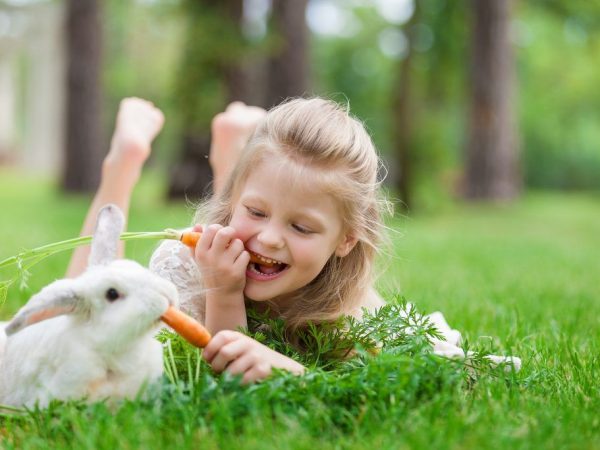
You need to monitor the quality nutrition of rabbits
In winter, add compound feed to this list (compound feed for calves, piglets is suitable), vitamins, fish oil, salt. Fresh grass is replaced with silage and hay. The rabbit will not eat poor quality foods: he will not be able to digest them.
Oak or alder branches are added to the rabbit menu.This feeding helps to regulate bowel movements.
New feed is added to the trough 2 times a day. For example, morning and evening. Preferably at the same time. Before a new portion, clean the feeder and drinker. It is necessary to leave fresh hay as a constant source of food and make sure that the pets are not left without food for a long time.
Rabbits should never be given apricots, potato tops, red cabbage, sweets, tomatoes, eggplants, onions, citrus fruits, lily of the valley, yarrow, bird cherry, wild rosemary, elderberry. This is poison for the eared. Large amounts of beans and peas can cause bloating and death. In this case, it is advisable to limit yourself to the tops of the peas.
Health
Rabbits and proper care for them includes mandatory vaccinations. It is very important to vaccinate animals on schedule. They are vaccinated during the first month of life. If the rabbits do not reach 500 g by the month, then the vaccination is done later. Rabbits should be clipped if they are kept at home or in cages. In free housing in rabbits, the claws grind off by themselves due to contact with stones and earth. With long claws, rabbits injure themselves and their relatives. This should be done approximately once a month.
Fur also needs maintenance. Rabbit hair rolls off quickly if not cared for. This item mainly concerns decorative pets. Brush the animal daily. It is a good idea to use cat or dog hair brushes. Remove loose lumps with scissors. If the condition of the coat is not important from the point of view of the purpose of keeping, the coat is inspected at least once every 2 weeks.
It is necessary to monitor the teeth of pets: rabbits grind their teeth with wooden sticks, solid food (fruits and vegetables). It does not matter how and where to keep small rabbits: in the garage, mini-greenhouse, on the balcony, whether it will be outdoor cultivation, a shed system or natural grazing, the main thing is to monitor the health of the pets, to properly care for the rabbits to feed them. Pets need careful daily care and monitoring. This is the only way they will delight the owners and make a profit.
How much are rabbits
Different breeds stand in different ways, the price fluctuates, depending on the region and place of residence. Also, the price depends on where and from whom the pet is ordered. Many farmers order animals from Europe, where prices need to be converted into euros. If the purchase takes place from breeders from Russia, the price must be converted into rubles. Breeders will have a higher price tag because quality breeding should pay off.
A self-respecting breeder provides the buyer with all the necessary information about the pet's parents, possible propensities for diseases and character traits.
If you wish, you can ask to show a photo or video of the pet, find out how and where he was kept, what they fed, what vaccinations were given. The price for the simplest breed can start from 1-2 thousand rubles. for one individual with documents and vaccinations.
If you buy a rabbit from your hands or at the poultry market, the seller does not always have documents for the animal. Plus, it can be sick. The price for such pets starts from 500 rubles. for one individual. As a rule, a female and a young rabbit will cost more, because they have the ability to reproduce.


